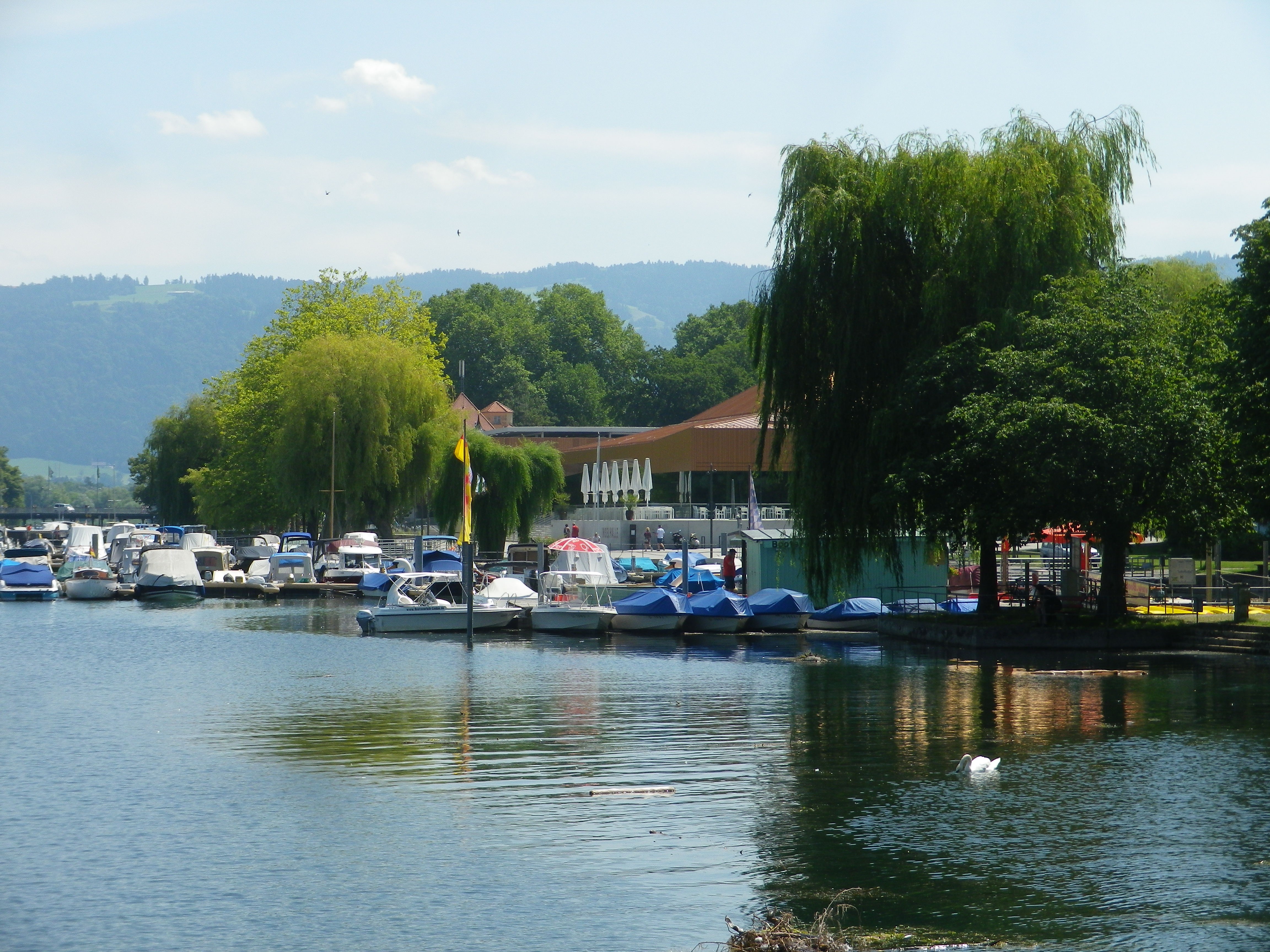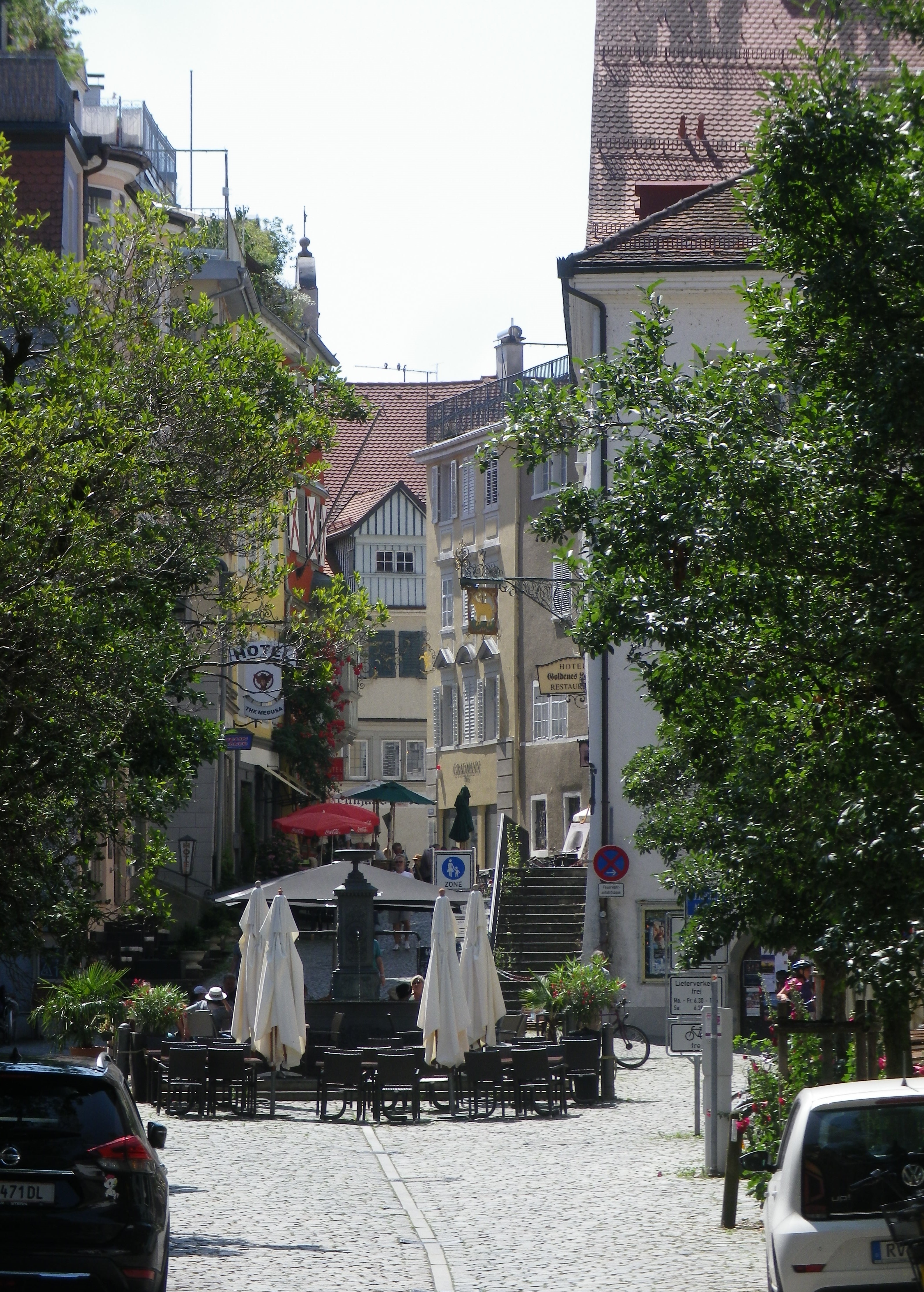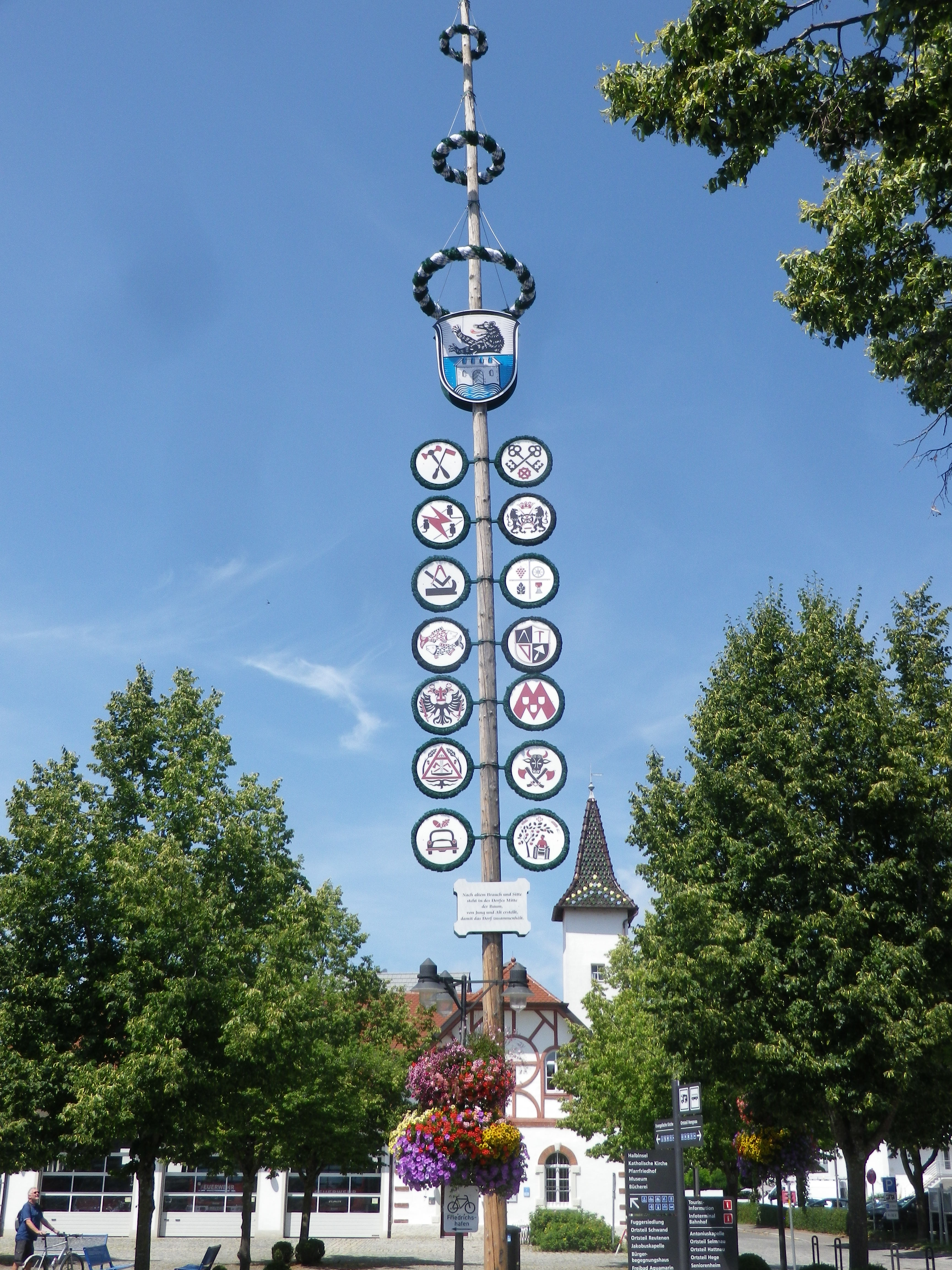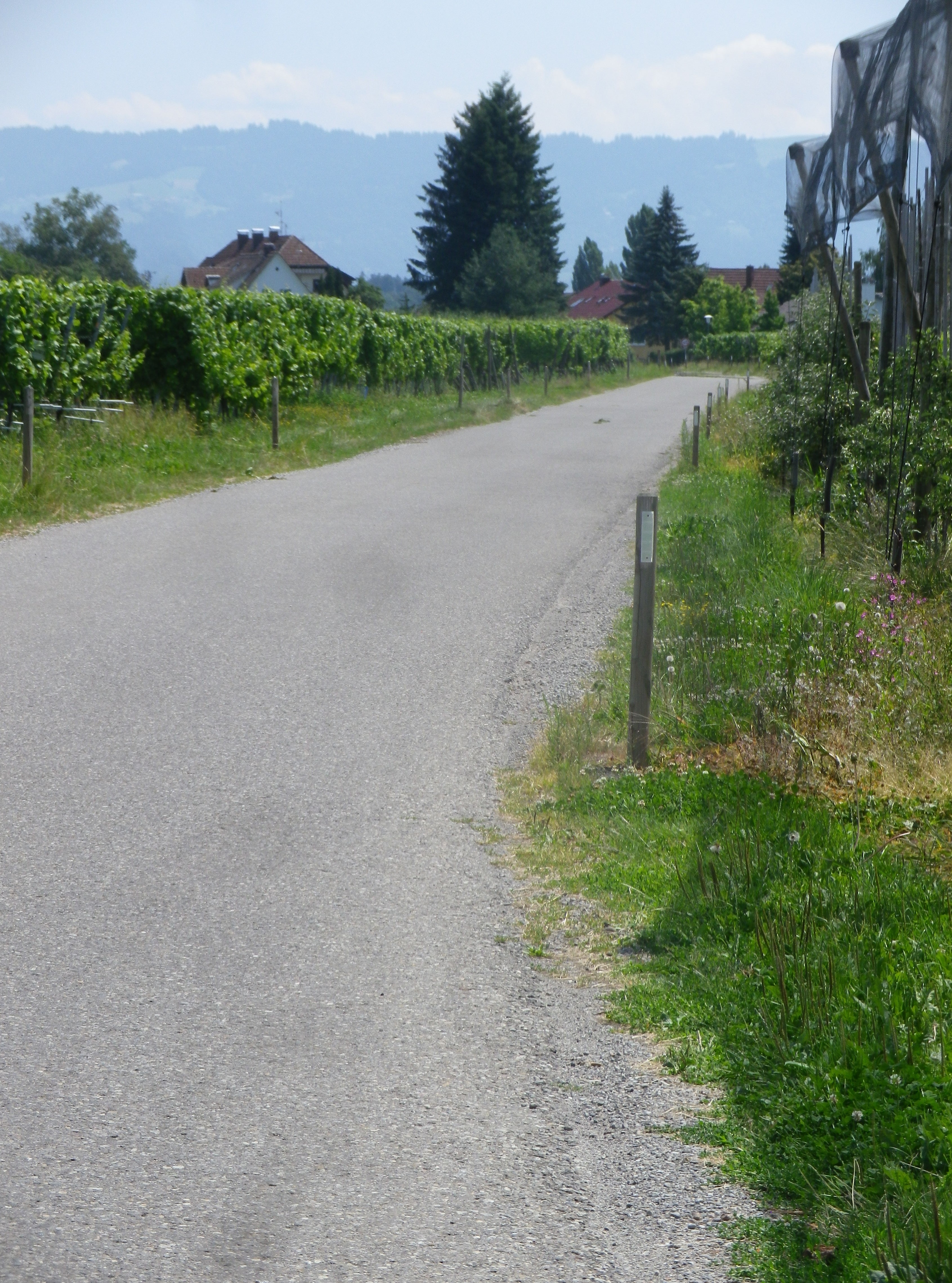Think of Bavaria, and snow-covered Alps (among other things) come to mind. But on this itinerary, cyclists cross only molehills, with the snow covered Alps majestically rising in the background, and with a magnificent lake in front of them. Lake Constance, or the Bodensee, as it is known in the German-speaking world, is truly a magnificent setting for any hiking or cycling trail.
In addition to water sports, this lake area offers lots of oppportuities for an active vacation. I have been on fantastic hikes and bicycling trails on both sides of this large lake, and on its two arms. (See here, here, and here.) There are trails galore for bikes and hikes, and several of them are wine-themed! I found this trail particularly appealing because it would offer a taste of Wuerttemberg while on bicycling tour in Bavaria.

This itinerary, although not specifically wine-themed, covered many vineyards, as well as orchards and other agricultural fields. While the official trailhead began at Lindau’s main train station, ideal if arriving by rail, which is convenient to Bregenz, Austria, less than eight kilometers/five miles away; or Switzerland, just across the lake, and easily accessible by ferry. But I began more inland, as parking is tight (and should be avoided) on the island, the historic center of Lindau.
Lindau is connected to the mainland by a very narrow land bridge used by the train, and a conventional bridge, used by cars. The itinerary crosses the bridge to the island, facing toward the suddenly in-your-face Alps of the Vorarlberg region of Austria. It is a great place for photos, as is the little park right at its terminus on the island. The island itself is another world, where crooked lanes, old, pastel-colored, wall-painted houses, and rococo flourishes abound everywhere. Such a combination positively encourages exploration.

Leaving the island by the land bridge, on a narrow parkland trail alongside the train tracks, the itinerary went along a path through lake-side parks and green spaces, before coming to orchards. This part of Bavaria is known for its fruit, and apples and pears seemed to be in abundance, although not quite ready for harvest.
Wasserburg am Bodensee and Nonnenhorn are the two last lakeside towns in Bavaria. But while both have interesting numerous lakeside attractions, the hinterlands of these two towns were my goal. From here, the trail meandered away from the lake and into the hills, where the vineyards lay. In all, there are about 20 wineries sharing 55 hectares (135 acres) of vines in this corner of Bavaria. Small, undoubtedly, but dedicated to good wine-making. Interestingly, by classification, they fall within the Wuerttemberg wine region, and like that region, as around other parts of the lake, Mueller-Thurgau is a well-favored varietal.

St Antonius Chapel called me, and since it was only a couple hundred meters (yards) off the trail, I went up there for the scenery. All three countries came within view, as well as much of the lake, and Alps, of course, both near and far. It would be a lovely place for a picnic, with comfortable benches for a post-prandial rest. But I was on a mission, so no prolonged stop for me.
The trail continued along vines, to and through Hengnau, then Rickatshofen, where I suddenly found myself in fields. But the downhill descent began shortly after that, with just a few minor ascents along the way. After Bodolz and Hochbuch, the trail enters back into greater Lindau. After the delightful interlude in the quiet uplands, it was a bit disappointing to be reaching the end of the trail. Although short, only 25 kilometers (15.5 miles), the trail provides a lot of variety, with magnificent views, and plenty of opportunities to stop and enjoy the Wuerttemberg wines of the Bavarian Lake Constance (Bodensee) region!



